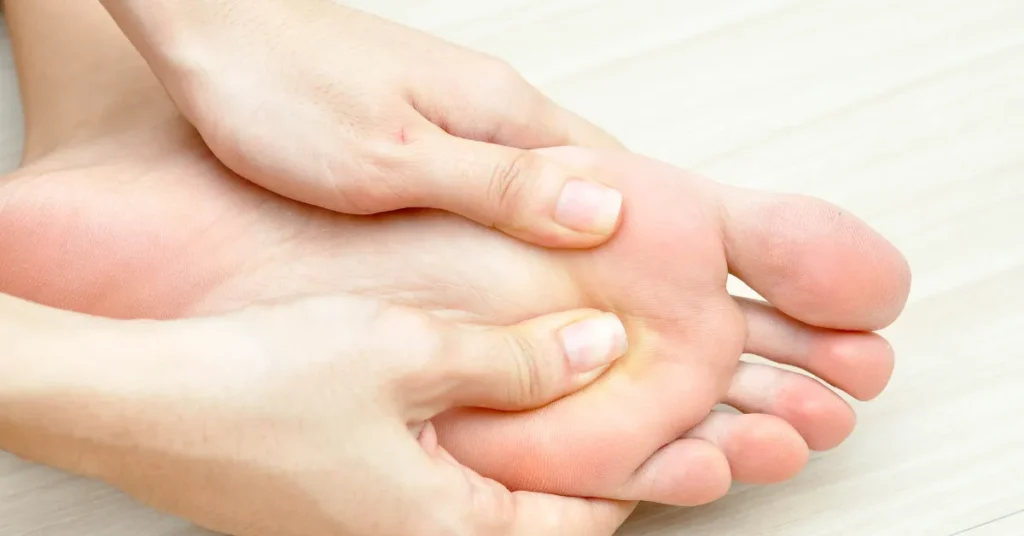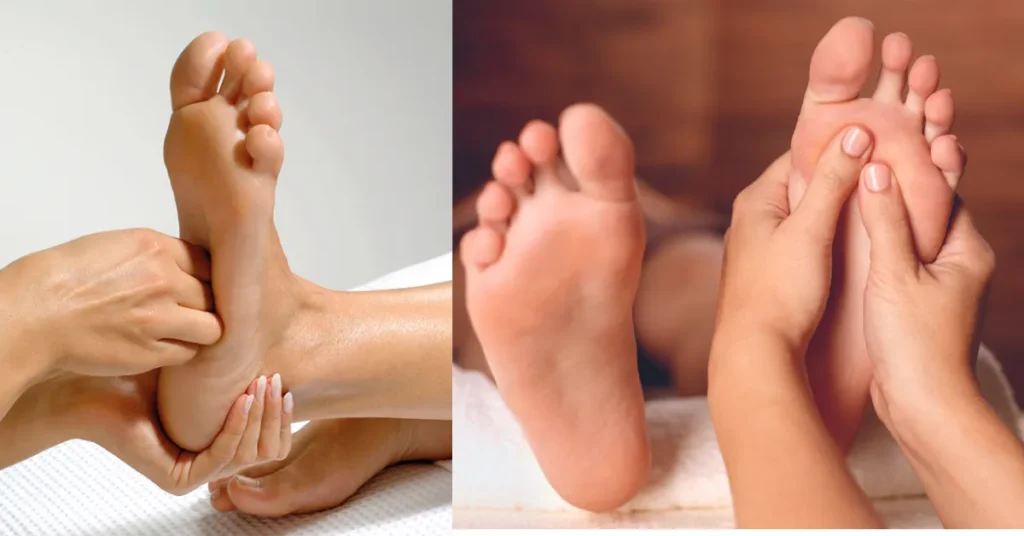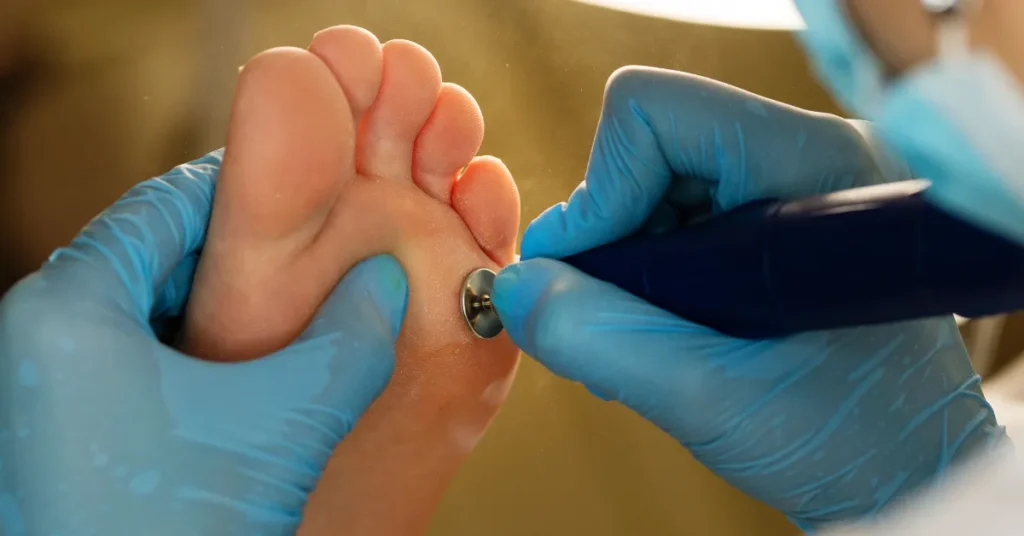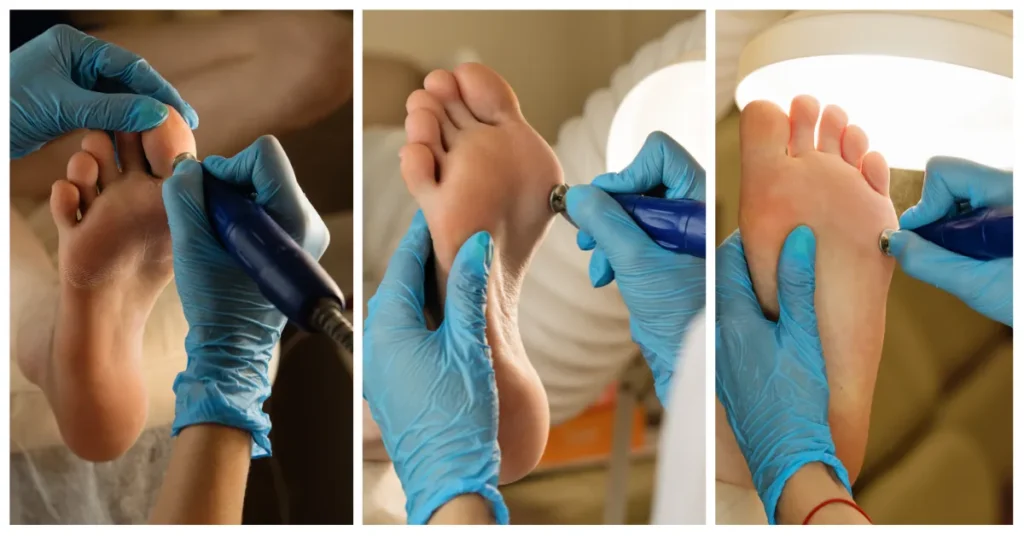Hair Sliver foot: Triple Health Connection
Hair Sliver foot. The biggest gray hair trends of 2025 emphasize personalization and creativity. Whether you want a soft, natural look or something more striking, there’s a style for everyone. Gray blending has become particularly popular, offering a more natural-looking coverage with low maintenance upkeep.
The Beauty and Benefits of Silver Hair
Silver hair has been gaining popularity not just among the elderly but across all age groups. Once seen as a sign of aging, silver hair has now become a trendy style statement embraced by many, including younger generations.
Silver Hair Trends in 2025
The biggest gray hair trends of 2025 emphasize personalization and creativity. Whether you want a soft, natural look or something more striking, there’s a style for everyone. Gray blending has become particularly popular, offering a more natural-looking coverage with low maintenance upkeep.

According to Vogue, “Since the process incorporates your natural gray, the grow-out is much less noticeable, and the maintenance appointments are less frequent.” This means you can go longer between salon visits while still looking polished.
Health Benefits of Embracing Silver Hair
Transitioning to gray hair can be more than just an aesthetic choice. Many women find it’s their first step towards embracing a healthier, more natural lifestyle. By eliminating harsh chemicals used in hair dyes, you reduce exposure to potentially harmful substances.
Silver hair also complements a wide range of skin tones and personal styles, from edgy to elegant, making it a versatile choice for those wanting to make a statement with their hair.
The Power of Silver in Health and Lifestyle
Beyond hair color, silver itself has remarkable properties that have been utilized for centuries in health care and lifestyle products.
Silver’s Antimicrobial Properties
Silver has a long history as an antibiotic in human health care. Its powerful antimicrobial properties make it effective against over 650 bacteria, viruses, and fungi. This is why silver is commonly used in:
- Wound dressings and creams
- Antibiotic coatings on medical devices
- Water purification systems
- Personal care products
Medical research has shown that silver helps in fighting infections and aids in cold and flu prevention, wound healing, and more.
Silver in Daily Life
The benefits of silver extend beyond medical applications to everyday products:
- Silver-infused fabrics for odor control
- Silver-coated surfaces for hygiene in public spaces
- Silver particles in personal care items
- Silver jewelry, which some believe can improve circulation and balance moods
According to research, silver can also help with internal heat regulation and circulation, with some studies reporting improvements in energy levels after wearing silver.

Foot Health: The Foundation of Overall Wellness
Your feet are literally the foundation of your body, providing stability and balance for every movement you make. Proper foot care is crucial for maintaining your overall health.
The Importance of Foot Health
Feet contain 26 bones, 33 joints, and over 100 muscles, tendons, and ligaments. They support your entire body weight and absorb the impact of every step you take. Neglecting foot health can lead to:
- Pain and discomfort that affects mobility
- Balance issues that increase fall risk
- Posture problems that can cause knee, hip, and back pain
- Decreased quality of life and limited activity
According to health experts, maintaining foot health helps in reducing the risk of common injuries such as sprains, strains, blisters, and stress fractures.
Daily Foot Care Routine
Basic care for healthy feet includes:
- Daily cleaning: Wash your feet every day with lukewarm water and mild soap, making sure to dry them thoroughly, especially between the toes.
- Regular inspection: Check your feet daily for cuts, sores, swelling, and infected toenails.
- Proper nail care: Clip your toenails straight across and keep them clean.
- Moisturizing: Apply moisturizer to prevent dry, cracked skin, but avoid between the toes.
- Appropriate footwear: Wear comfortable shoes that fit properly and provide adequate support.
- Regular exercise: Keep your feet active to improve circulation and strength.
Following these simple steps can prevent many common foot problems and contribute to your overall health.

Healthy Hair Care: Beyond Color and Style
Whether you choose silver hair or any other color, maintaining healthy hair requires proper care and attention.
Essential Hair Care Tips
Dermatologists recommend these practices for healthy hair:
- Know your hair type: Understanding your hair type helps you choose the right products and care routine.
- Proper washing: Wash your hair based on how often it gets oily, applying shampoo mainly to your scalp.
- Conditioning: Always use conditioner after washing, focusing on the ends of your hair.
- Gentle handling: Be gentle when brushing, especially when hair is wet.
- Heat protection: Minimize heat styling and always use heat protectant products.
- Regular trims: Get your hair trimmed every 8-12 weeks to prevent split ends.
- Healthy diet: Eat foods rich in protein, omega-3 fatty acids, and zinc for stronger hair.
According to the American Academy of Dermatology, these practices can significantly improve hair health and appearance.
Natural Hair Care Solutions
Many people are turning to natural hair care solutions to avoid harsh chemicals. Some effective natural approaches include:
- Using coconut or olive oil for deep conditioning
- Rinsing with apple cider vinegar to restore pH balance
- Applying aloe vera gel for moisture and scalp health
- Limiting heat styling and air-drying when possible
- Protecting hair from environmental damage with hats or scarves
These natural methods can help maintain hair health while reducing exposure to potentially harmful chemicals.
The Interconnected Approach to Health and Beauty
While hair, silver, and foot care might seem like separate topics, they’re connected through holistic health principles:
- Natural choices: Embracing silver hair, using silver-infused health products, and adopting natural foot care all reflect a movement toward more natural health approaches.
- Preventive care: Regular maintenance of hair and feet, along with the antimicrobial benefits of silver, all contribute to preventing health problems before they start.
- Whole-body wellness: Healthy feet provide the foundation for an active lifestyle, which promotes overall health, while proper hair care and the benefits of silver contribute to both physical and emotional well-being.
By taking an integrated approach to these three aspects of health and beauty, you can enhance your quality of life while expressing your personal style. Whether you’re embracing silver hair, incorporating silver products into your health routine, or paying more attention to foot care, these practices contribute to overall wellness in ways that go beyond mere appearance.

How to get a hair sliver out of your foot
Before using tweezers or a needle to remove a splinter, try using cellophane tape to remove it. Simply put the tape over the splinter, then pull the tape off. The tape will stick to the splinter and remove it painlessly.
If tape doesn’t work, try these steps.
- Wash your hands well with soap and water. Do not wet or soak the splinter because it will be harder to remove in one piece.
- Grasp the end of the splinter with clean tweezers. If the splinter is embedded in the skin:
- Clean a needle with alcohol and make a small hole in the skin over the end of the splinter.
- Lift the splinter with the tip of the needle until it can be grasped with the tweezers.
- Gently pull the splinter out.
- Clean the wound.
- Watch for any signs of infection.
You may need medical care if the splinter:
- Cannot be easily removed.
- Broke off, and part of it remains in the wound, or you are uncertain that the splinter has been removed.
- Is very large.
- Is deeply embedded in the skin.
- Is in the eye.
Deep hair sliver in foot
Materials such as glass, plastic, metal objects and wood comprise 90 percent of all foreign bodies that can enter into the foot. However, there are many other objects that the podiatrist should be concerned with as well. One foreign body in particular that is unusual but seems to occur more frequently in our practice than one would imagine is the hair sliver.
Foreign bodies can be diagnostic dilemmas since many may not be visible on X-ray. One may employ many other modalities for diagnosis, such as computed tomography (CT) scans, magnetic resonance imaging (MRI), or tangential X-rays, but these imaging tools can often be unsuccessful as well. However, if suspicion is high, surgical exploration may be warranted for the area in question. Overlooking a foreign body is the second most common reason that patients file malpractice lawsuits against emergency room physicians.
In 1942, Allington and Templeton described a pilonidal sinus, which was an important step leading to the discovery of an occupationally acquired disease seen in barbers and hairdressers. Studies in the 1950s found a rate of approximately 13 percent of problems with hair slivers among these two groups. The hair slivers in these groups are unusual in that they occur in non-hair-bearing areas such as between the toes or on the bottom of the foot. Other occupations such as dog groomers and sheep shearers are also at risk, but hair slivers can occur in anyone who owns an animal. We have seen them in runners who get pet hairs in their shoes as well.
The method of penetration is controversial, but it can be related to the old trick of pushing a needle through a coin. Drive a needle through a cork stopper of equal length and then place the cork on the coin. The cork acts as a splint and prevents the needle from breaking apart or bending as the needle drives through the coin. One can relate this to the penetration of the hair sliver as well. The mesh of the sock combined with the pressure between the foot and the shoe allows the hair to pass into the foot with the repeated blows of ambulation.
Hair slivers can be a source of pain, infection and chronic drainage. In our office, we have found they can mimic a wart, an interdigital tinea or a bacterial infection. The number of bacteria needed to start an infection is 102 for a foreign body. Therefore, treatment may involve excision as well as oral antibiotics. The best time to remove a hair sliver is as soon as one discovers it via clinical examination and history (including an occupational history). Waiting may only drive the sliver deeper into the tissue, requiring more aggressive surgical exploration and removal.
Foot soak hair sliver
Nobody likes a splinter, especially in their foot! If you happen to get splinters in your feet, act quickly to clean the affected area and remove the splinter before it becomes more painful or even gets infected. The traditional method requires a small needle to help loosen the splinter and a pair of tweezers to pull it out. There are also some less conventional methods and home remedies that you can try using to painlessly pull shallow splinters out or bring deep splinters to the surface so you can reach them with tweezers.
- Wash your hands and feet with soap and water to disinfect them. Rinse your hands and feet in clean warm or cold running water. Apply soap and scrub your hands and feet for at least 20 seconds.
- You can soak the affected foot in warm water if you want to make the skin more pliable, but this is not required. If you choose to do so, fill a container that is big enough for your foot to fit in with warm water and let the foot soak for about 5 minutes.
2. Dry your hands and feet off gently with a clean towel. Gently pat the affected area dry with the towel so you don’t irritate the wound. It’s important to use a clean towel so you don’t transfer any germs to the area that has the splinter in it.
- If you don’t have a clean towel, use paper towels instead.
3. Sterilize a pair of tweezers and a small needle with rubbing alcohol. Pour some rubbing alcohol out onto a cotton swab or a folded paper towel. Rub down a pair of tweezers thoroughly to clean them. Use a fresh cotton swab or paper towel and repeat this for a small needle, such as a sewing needle.
- Always disinfect any instruments you are going to be using to penetrate your skin to avoid infection.
4. Use the tip of the needle to try and slide the tip of the splinter out. Gently poke the tip of the splinter with the needle and start to slowly slide it up so the tip is above your skin. Pierce a little more of the skin if you can’t reach the tip of the splinter with the needle.
- If this doesn’t work, don’t worry. You can still try to pull the splinter out with the tweezers or use other methods to try and bring the splinter to the surface first.
how to remove hair sliver from foot
Hair splinters, also known as “trichonodosis,” are formed when a strand of hair becomes embedded in the skin, causing irritation, pain, and inflammation. They are more common in people with coarse or curly hair but can affect anyone. Hair splinters are typically caused by loose hairs becoming trapped in fabrics such as clothing, bedding, or carpeting and piercing the skin upon contact or friction.
Identifying hair splinters:
- Hair splinters can appear as small, dark or translucent specks embedded in the skin. They may be difficult to detect at first glance, particularly if they are deeply embedded.
- Hair splinters are common on areas of the body with hair, such as the hands, feet, arms, legs, and buttocks. They can also appear on the scalp, especially when hair becomes trapped in combs, brushes, or hair accessories.
- Hair splinters can cause pain, itching, irritation, or inflammation near the point of penetration. In some cases, they are accompanied by redness, swelling, or a raised bump.
Understanding hair splinters:
- Hair splinters are composed of individual strands of hair that have broken off or become detached from the scalp or body. They can vary in length and thickness, depending on the type of hair and the circumstances surrounding their occurrence.
- Hair splinters can occur when loose hairs become trapped in fabrics, such as clothing, bedding, or carpeting, and penetrate the skin upon contact or friction. They can also occur during activities that involve handling or grooming hair, such as brushing, combing, or styling.
- Individuals with coarse or curly hair types are more prone to hair splinters due to the nature of their hair. Certain occupations or activities that involve frequent contact with fabrics or materials, such as healthcare workers, athletes, or individuals who work with textiles, may also be at increased risk.
- While hair splinters are typically minor and resolve on their own with proper extraction, they can sometimes lead to complications such as infection if not removed promptly or if the area becomes inflamed or irritated. It’s essential to handle hair splinters carefully to minimize the risk of complications.
Removing hair sliver from foot
- Hair splinters are composed of individual strands of hair that have broken off or become detached from the scalp or body. They can vary in length and thickness, depending on the type of hair and the circumstances surrounding their occurrence.
- Hair splinters can occur when loose hairs become trapped in fabrics, such as clothing, bedding, or carpeting, and penetrate the skin upon contact or friction. They can also occur during activities that involve handling or grooming hair, such as brushing, combing, or styling.
- Individuals with coarse or curly hair types are more prone to hair splinters due to the nature of their hair. Certain occupations or activities that involve frequent contact with fabrics or materials, such as healthcare workers, athletes, or individuals who work with textiles, may also be at increased risk.
- While hair splinters are typically minor and resolve on their own with proper extraction, they can sometimes lead to complications such as infection if not removed promptly or if the area becomes inflamed or irritated. It’s essential to handle hair splinters carefully to minimize the risk of complications.
The Anatomy of a Hair Splinter: What Makes It So Irritating?
The anatomy of a hair splinter involves several factors that contribute to its irritating nature:
- Hair splinters consist of individual strands of hair that have broken off or become detached from the scalp or body. These strands can vary in length and thickness, but even small fragments can irritate when embedded in the skin.
- The tip of a hair strand can be quite sharp, especially if it’s broken off cleanly or has a tapered end. When a hair splinter penetrates the skin, its sharp tip can cause pain, discomfort, and irritation.
- When a foreign object, such as a hair splinter, becomes embedded in the skin, the body’s immune system may mount a response to remove it. This can lead to inflammation, redness, and swelling at the site of penetration, further exacerbating the irritation.
- The location of a hair splinter can also affect its irritation level. Splinters in areas with frequent movement or pressure, such as the hands, feet, or joints, may be more uncomfortable than those in less mobile areas.
- Friction between the hair splinter and the adjacent skin can exacerbate irritation and inflammation. Walking and gripping objects, for example, can cause discomfort due to repeated rubbing or pressure on the affected area.
- If a hair splinter is not removed as soon as possible, or if the area becomes contaminated with dirt or bacteria, infection may occur. The presence of a foreign object in the skin can allow bacteria to enter, resulting in a localized infection and additional symptoms like pus, warmth, and tenderness.




